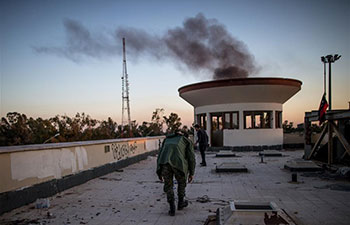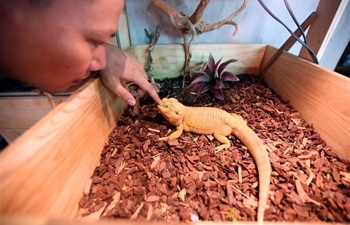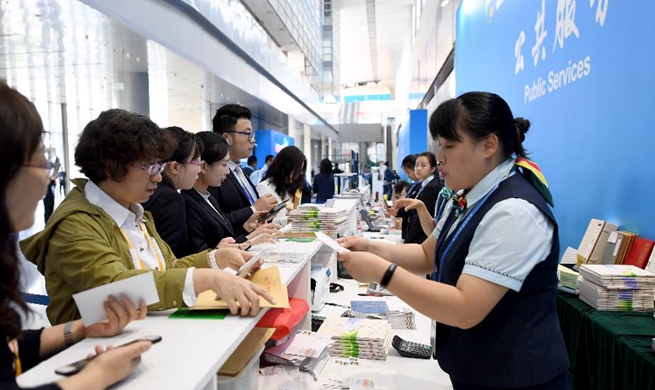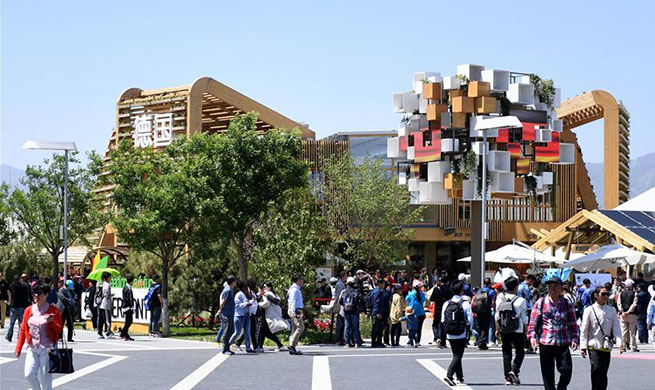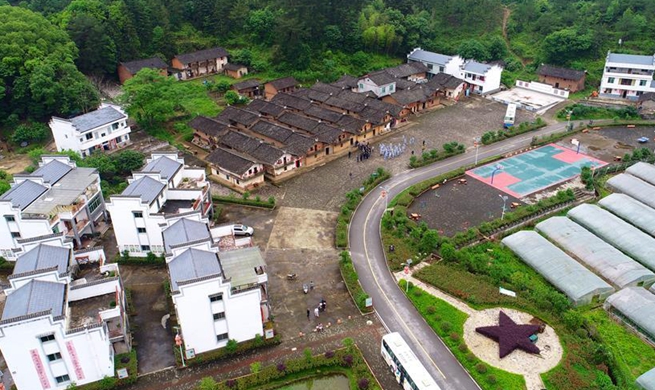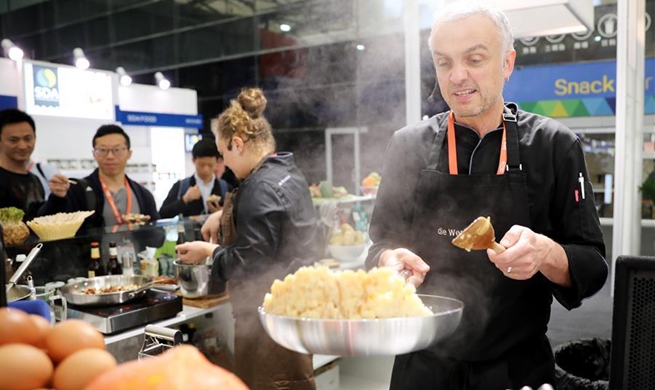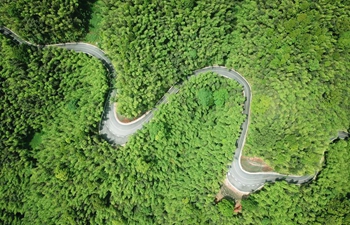NAIROBI, May 14 (Xinhua) -- A greenhouse stands in Vincent Mutua's compound in Kitengela, a suburb on the outskirts of Nairobi, Kenya's capital.
Until the middle of last year, Mutua was using the structure to grow a variety of crops that include tomatoes, capsicum and cucumbers for sale.
But he was in January forced to replace the greenhouse polythene cover with a shade net after suffering several crop losses.
"The polythene cover could not work well with the current unpredictable weather. The lengthy dry spell that hit the country from the third quarter of 2017 to April this year made growing crops in the greenhouses challenging because the inside temperatures could get too high, killing the plants," Mutua said recently.
He is among a growing number of farmers in the east African nation who are ditching the traditional greenhouse polythene covers for shade nets as the vagaries of climate change bite.
Over the years, greenhouses have been seen as the best bet for food secure nations across the world.
But in Kenya, with the weather oscillating from one extreme to another, farmers are finding it harder to use the traditional polythene-covered greenhouses as they have done for years.
The past months have seen Kenya experience unusually dry spell with temperatures in some parts of the country soaring to 36 degrees Celsius, according to the Meteorological Department.
The high temperatures led to high disease and pest incidences with the worst affected being growers of tomatoes, capsicum and leafy vegetables.
In the case of vegetables, the crops become yellow or wither due to the high humidity caused by high temperatures.
"In March, I opened the door of my greenhouse and found my spinach leaves turning yellow. At first I thought it was a disease and even applied some chemicals but later I realized it was the high temperature that was killing the crop," recounted farmer Cosmas Zenje.
Zenje farms in Kilifi at the coast, one of the areas that is worst hit by the high temperatures.
For tomatoes and capsicum, high humidity inside the plastic-filmed greenhouses is the main cause of bacterial wilt, a deadly disease that wipes out the crops.
Though expensive, Zenje has also embraced shade nets to survive in farming amid the drastic effects of climate change.
Beatrice Macharia of Growth Point agro-consultancy noted that with the dry period dominating the weather pattern in Kenya, shade nets have become a better alternative to plastic film since they allow good air circulation in the structures.
"Most traditional greenhouses have one or two windows, which initially was enough for air circulation when the temperatures were moderate but with the dry spell dominating, farmers have no choice but to embrace shade nets if they are to continue farming. The structures allow free passage of air since they are porous," she said.
She noted that if the outside temperature is about 30 degrees Celsius, inside a plastic film greenhouse, temperature will range from 31 to 41 Celsius.
According to her, unlike plastic film greenhouses, farmers can choose less density shade nets for colder areas and high density for hotter areas or combine both on the roofs and walls to create ideal environments.
It costs an average of 80,000 shillings (about 800 U.S. dollars) to buy a standard greenhouse, but for shade nets, the price could rise to about 1,000 dollars.
Kenyan farmers, therefore, have to dig deeper into their pockets as beat the unfavorable weather.



